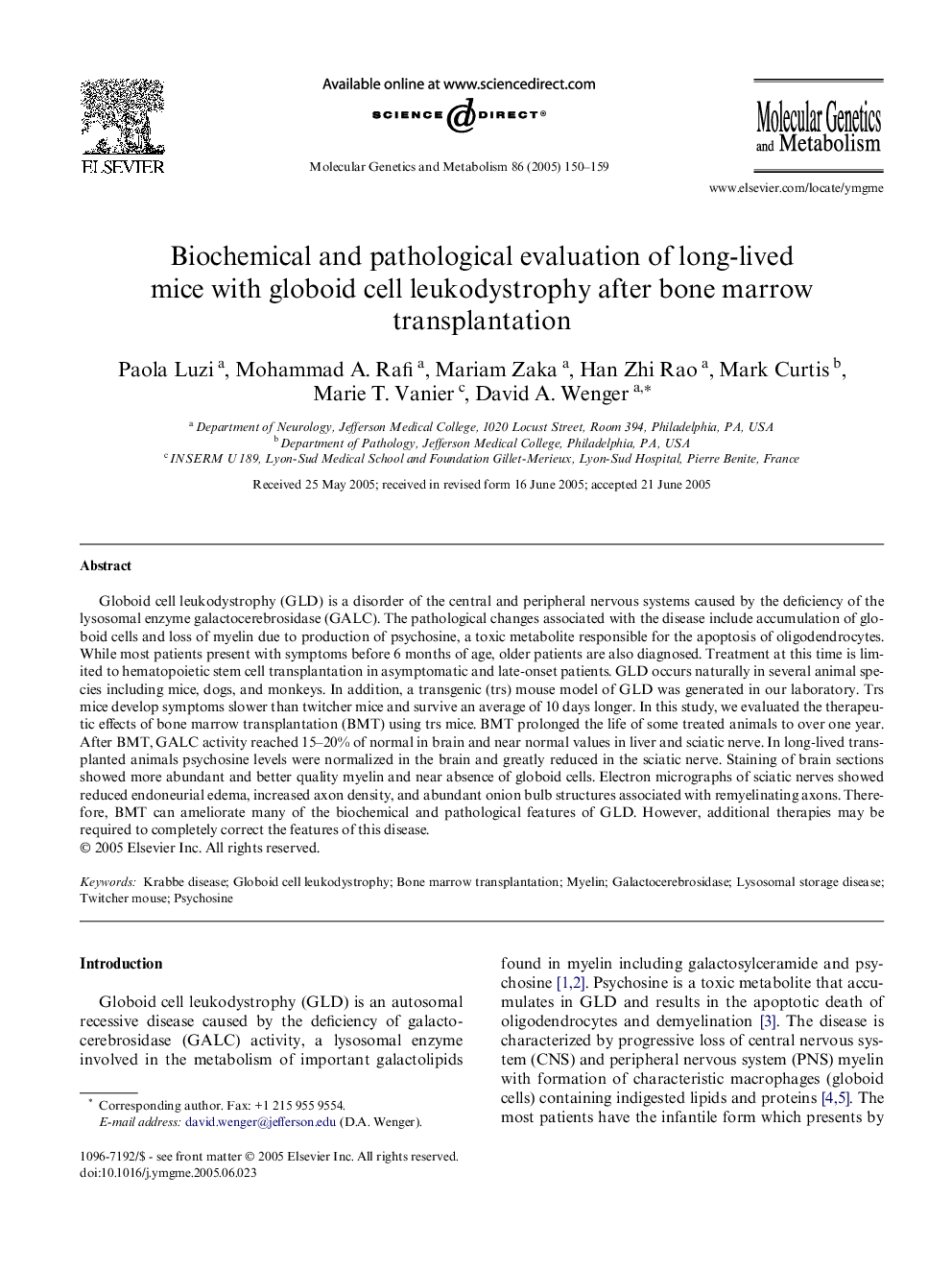| کد مقاله | کد نشریه | سال انتشار | مقاله انگلیسی | نسخه تمام متن |
|---|---|---|---|---|
| 9893355 | 1541572 | 2005 | 10 صفحه PDF | دانلود رایگان |
عنوان انگلیسی مقاله ISI
Biochemical and pathological evaluation of long-lived mice with globoid cell leukodystrophy after bone marrow transplantation
دانلود مقاله + سفارش ترجمه
دانلود مقاله ISI انگلیسی
رایگان برای ایرانیان
کلمات کلیدی
موضوعات مرتبط
علوم زیستی و بیوفناوری
بیوشیمی، ژنتیک و زیست شناسی مولکولی
زیست شیمی
پیش نمایش صفحه اول مقاله

چکیده انگلیسی
Globoid cell leukodystrophy (GLD) is a disorder of the central and peripheral nervous systems caused by the deficiency of the lysosomal enzyme galactocerebrosidase (GALC). The pathological changes associated with the disease include accumulation of globoid cells and loss of myelin due to production of psychosine, a toxic metabolite responsible for the apoptosis of oligodendrocytes. While most patients present with symptoms before 6 months of age, older patients are also diagnosed. Treatment at this time is limited to hematopoietic stem cell transplantation in asymptomatic and late-onset patients. GLD occurs naturally in several animal species including mice, dogs, and monkeys. In addition, a transgenic (trs) mouse model of GLD was generated in our laboratory. Trs mice develop symptoms slower than twitcher mice and survive an average of 10 days longer. In this study, we evaluated the therapeutic effects of bone marrow transplantation (BMT) using trs mice. BMT prolonged the life of some treated animals to over one year. After BMT, GALC activity reached 15-20% of normal in brain and near normal values in liver and sciatic nerve. In long-lived transplanted animals psychosine levels were normalized in the brain and greatly reduced in the sciatic nerve. Staining of brain sections showed more abundant and better quality myelin and near absence of globoid cells. Electron micrographs of sciatic nerves showed reduced endoneurial edema, increased axon density, and abundant onion bulb structures associated with remyelinating axons. Therefore, BMT can ameliorate many of the biochemical and pathological features of GLD. However, additional therapies may be required to completely correct the features of this disease.
ناشر
Database: Elsevier - ScienceDirect (ساینس دایرکت)
Journal: Molecular Genetics and Metabolism - Volume 86, Issues 1â2, SeptemberâOctober 2005, Pages 150-159
Journal: Molecular Genetics and Metabolism - Volume 86, Issues 1â2, SeptemberâOctober 2005, Pages 150-159
نویسندگان
Paola Luzi, Mohammad A. Rafi, Mariam Zaka, Han Zhi Rao, Mark Curtis, Marie T. Vanier, David A. Wenger,